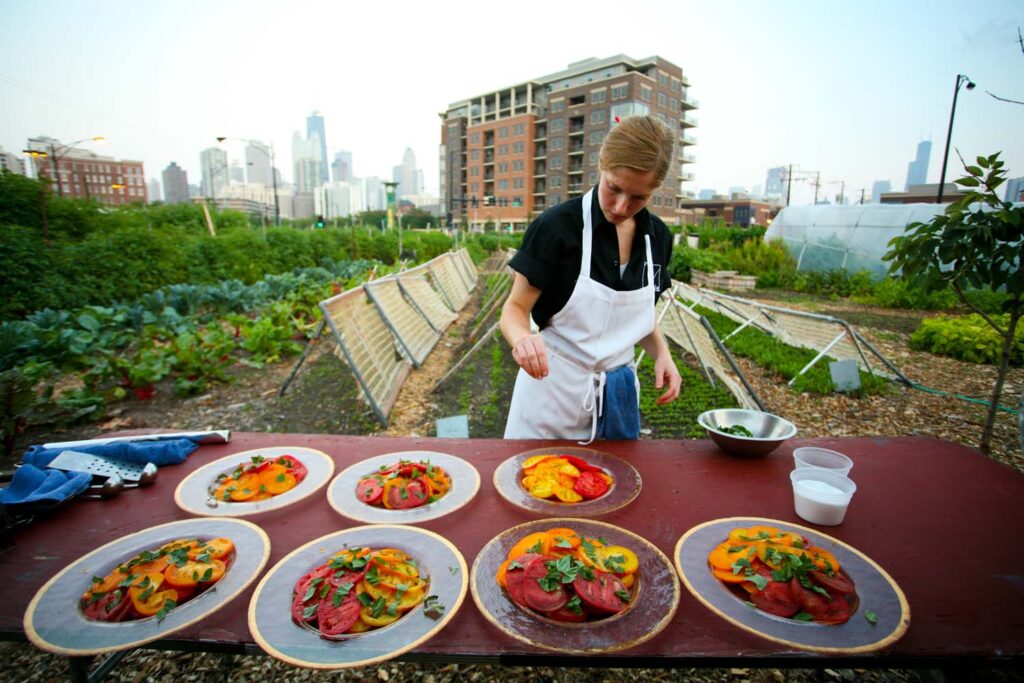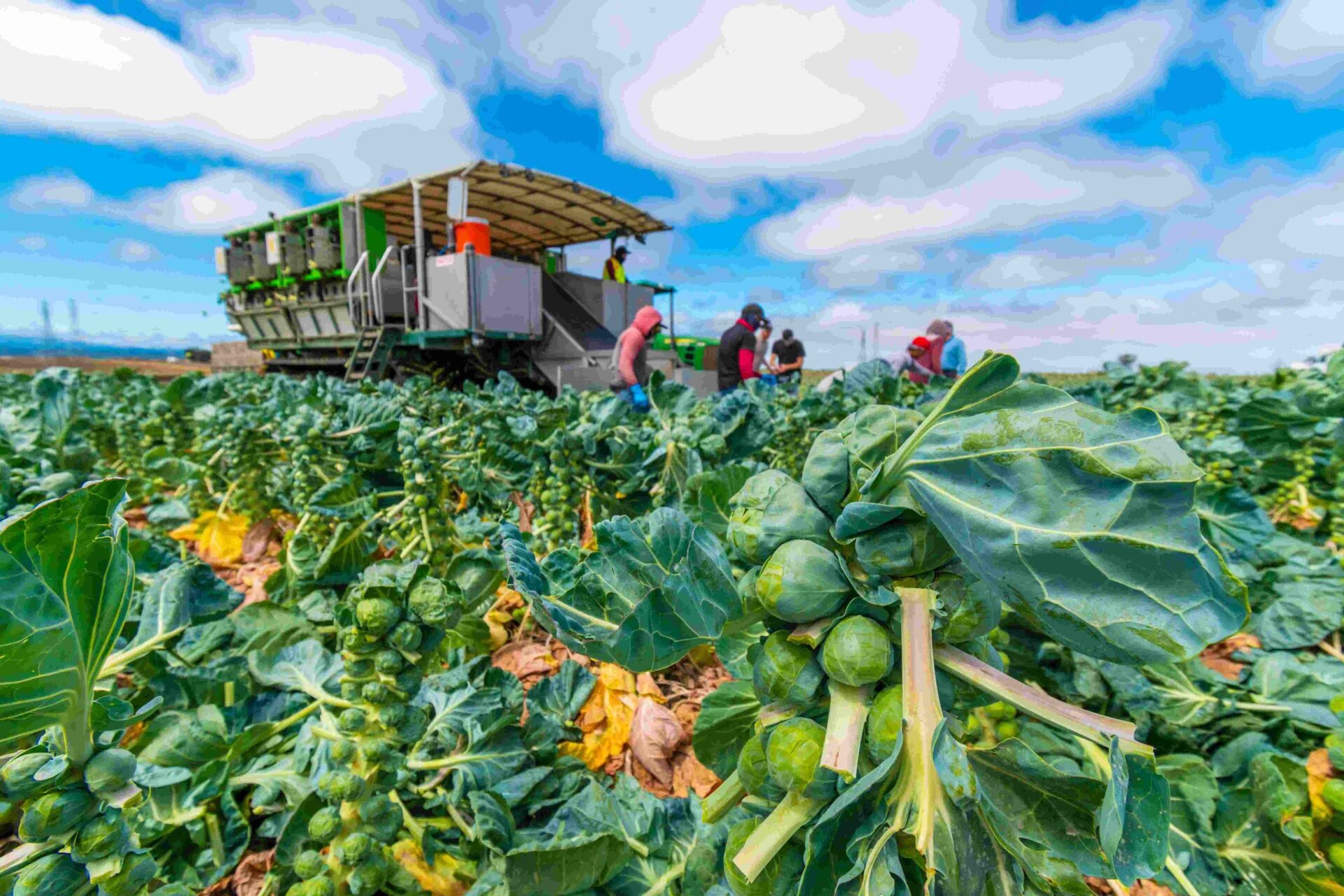In the heart of rural America, where fields stretch endlessly and barns dot the landscape, lies a culinary treasure trove waiting to be discovered: cottage cuisine. This culinary movement celebrates the essence of farm-to-table dining, embracing locally sourced ingredients and the traditional techniques of homestead cooking. It’s a journey back to simpler times, where the flavors of the land are cherished and meals are crafted with care and reverence. In this article, we delve into the rich tapestry of farm-to-table dining experiences scattered across rural America, where each bite tells a story of the land and the people who nurture it.
The Essence of Farm-to-Table

At the core of cottage cuisine is the belief in the importance of knowing where your food comes from. In rural America, this connection to the land is deeply ingrained in the culture, with many families growing their own fruits, vegetables, and herbs. Farm-to-table dining extends this ethos to the restaurant table, offering patrons a taste of the region’s bounty. From tender heirloom tomatoes plucked straight from the vine to succulent pasture-raised meats, each ingredient speaks of the soil it was grown in and the hands that cultivated it. Dining at a farm-to-table establishment is not just about sustenance; it’s a culinary pilgrimage that honors the land and its offerings.
The rustic charm of these dining experiences often invites patrons to dress comfortably, with some even opting for the cozy elegance of a bathrobe for women.
Exploring Regional Flavors
One of the most enticing aspects of farm-to-table dining in rural America is the diversity of regional flavors waiting to be savored. From the rolling hills of Vermont to the sun-kissed plains of Texas, each locale boasts its own unique culinary heritage. In the Pacific Northwest, seafood reigns supreme, with freshly caught salmon and Dungeness crab taking center stage on many menus. Meanwhile, in the heartland of the Midwest, hearty fare like fried chicken and cornbread reigns supreme, showcasing the bounty of the region’s fertile farmland. Whether you find yourself in the verdant valleys of California or the rugged terrain of Appalachia, there’s a farm-to-table feast waiting to delight your taste buds, perhaps enjoyed under the cool mist of patio misters.
The Art of Slow Food
In a world where fast food reigns supreme, farm-to-table dining offers a refreshing alternative: the art of slow food. This movement emphasizes the importance of taking the time to savor each bite, to appreciate the effort that went into growing and preparing the ingredients. At farm-to-table restaurants, meals are not rushed affairs but leisurely celebrations of good food and good company. Chefs take pride in crafting dishes that highlight the natural flavors of the ingredients, allowing diners to experience the true essence of the land. Whether you’re indulging in a leisurely brunch on a sunny patio or enjoying a candlelit dinner under the stars, farm-to-table dining invites you to slow down, reconnect with the land, and savor the simple pleasures of life. As you enter these culinary sanctuaries, you’re greeted by custom iron doors, which serve as portals to a realm where craftsmanship and culinary artistry intertwine seamlessly.
Preserving Culinary Traditions
In addition to celebrating the flavors of the land, farm-to-table dining also plays a vital role in preserving culinary traditions passed down through generations. In rural America, many farm-to-table restaurants draw inspiration from age-old recipes and cooking techniques that have been honed over centuries. From pickling and preserving to smoking and curing, these time-honored practices add depth and character to dishes, infusing them with a sense of history and heritage. By supporting farm-to-table establishments, diners not only indulge in delicious meals but also contribute to the preservation of culinary traditions that might otherwise be lost to time.
Travelers visiting rural areas can enhance their experience by exploring local farms and indulging in farm-to-table dining, while also considering convenient services like car rental in Sarajevo to facilitate their journey.
The Impact of Sustainable Agriculture

Beyond the plate, farm-to-table dining in rural America also has a profound impact on the environment and local communities. By prioritizing locally sourced ingredients, farm-to-table restaurants reduce the carbon footprint associated with food transportation and support small-scale farmers and producers. Sustainable agriculture practices such as crop rotation, organic farming, and pasture-raised livestock management are not only better for the land but also produce healthier, more flavorful ingredients. Moreover, by investing in the local food economy, farm-to-table establishments help strengthen rural communities, creating jobs and fostering a greater sense of connection among residents. The sale of locally made products extends beyond food, encompassing items like handmade crafts and apparel, such as ladies t-shirts, further bolstering the community’s economic resilience.
The Intersection of Culinary Innovation
As the farm-to-table movement continues to gain momentum across rural America, an exciting intersection is emerging between culinary tradition and innovation. While farm-to-table dining celebrates the time-honored techniques of homestead cooking, it also provides a fertile ground for chefs to experiment with new flavors and culinary concepts. In kitchens from coast to coast, chefs are pushing the boundaries of what farm-to-table cuisine can be, incorporating global influences and cutting-edge cooking methods to create dishes that are as inventive as they are delicious. From fermented foods and foraged ingredients to molecular gastronomy and plant-based innovations, the possibilities are endless. Chefs are now even experimenting with unconventional treats like cookies and cream edibles, showcasing the dynamic evolution of farm-to-table dining.
Embracing Diversity in the Kitchen
One of the most exciting developments in farm-to-table dining is the increasing emphasis on diversity and inclusivity in the kitchen. Historically, the culinary world has been dominated by male chefs of European descent, but that is rapidly changing as chefs from diverse backgrounds are stepping into the spotlight. In rural America, farm-to-table restaurants are embracing chefs of all genders, races, and ethnicities, recognizing that diversity in the kitchen leads to greater creativity and innovation. By championing underrepresented voices in the culinary world, farm-to-table establishments are not only expanding the boundaries of what is possible in the kitchen but also fostering a more inclusive and equitable food culture. Some rural communities, like Bettendorf, are even incorporating homeschooling tutoring in Bettendorf as part of their culinary education programs, further enriching the diversity and talent pool within the kitchen.
The Rise of Food Tourism
As farm-to-table dining experiences continue to captivate food lovers across the country, a new trend is emerging: food tourism. Travelers are increasingly seeking out destinations known for their vibrant food scenes, where they can indulge in farm-fresh meals and culinary adventures. From agritourism destinations where visitors can pick their own produce straight from the field to farm-to-table bed and breakfasts offering immersive culinary experiences, rural America is becoming a hotbed of food tourism activity. Whether you’re exploring the rolling hills of wine country or sampling artisanal cheeses in a quaint mountain town, farm-to-table dining has become a must-try attraction for travelers seeking authentic culinary experiences. For those craving a taste of local flavors, don’t miss the farm-to-table restaurant behind the red curtains in Colorado Springs, promising an unforgettable gastronomic journey.
The Role of Technology in Farm-to-Table Dining
While farm-to-table dining is rooted in tradition, technology is playing an increasingly important role in shaping the future of the movement. From online farmer’s markets and food delivery apps to blockchain-based supply chain tracking systems, technology is making it easier than ever for consumers to connect with local farmers and producers. Chefs are also embracing technology in the kitchen, using sous vide machines, precision cookers, and other high-tech gadgets to elevate their farm-to-table creations. As technology continues to evolve, it holds the promise of making farm-to-table dining more accessible, sustainable, and innovative than ever before. The integration of technology allows a promotional products supplier to effectively market and distribute farm-fresh goods directly to consumers.
Educating the Next Generation
As farm-to-table dining becomes more mainstream, there is a growing recognition of the importance of educating the next generation about where their food comes from and the value of supporting local agriculture. In rural communities across America, schools are incorporating farm-to-table principles into their curricula, teaching students about gardening, cooking, and the importance of sustainable food practices. Meanwhile, organizations like Farm to School are working to connect schools with local farmers, ensuring that students have access to fresh, nutritious meals made with locally sourced ingredients. By instilling a love and appreciation for farm-to-table dining at a young age, we can ensure that the movement continues to thrive for generations to come.
Communities like Charlotte are recognizing the significance of sustainability not only in food but also in aspects like water damage repair in Charlotte, emphasizing holistic local resilience.
The Future of Farm-to-Table Dining

As we look to the future, the possibilities for farm-to-table dining in rural America are endless. From the adoption of regenerative farming practices to the exploration of new culinary frontiers, the movement is poised to continue evolving and expanding in exciting ways. By embracing diversity, harnessing the power of technology, and educating consumers about the importance of supporting local agriculture, we can build a more sustainable and equitable food system for all. So whether you’re a chef, a farmer, or simply someone who loves good food, let’s come together to celebrate the bounty of the land and the rich tapestry of flavors that make farm-to-table dining in rural America so special. And for those seeking an extraordinary experience, why not charter a jet to explore the hidden gems of rural farm-to-table cuisine firsthand?
Conclusion
In conclusion, the journey through the world of cottage cuisine and farm-to-table dining in rural America is one of discovery, innovation, and celebration. From the humble beginnings of homestead cooking to the vibrant culinary scenes of today, the movement has evolved into a tapestry of flavors, traditions, and experiences that continue to captivate food lovers across the country. As we’ve explored the essence of farm-to-table dining, delved into regional flavors, and considered the intersection of tradition and innovation, it’s clear that the future of cottage cuisine is bright. Investing in the best Japanese scissors for precise culinary craftsmanship can elevate the artistry and efficiency in the kitchen, further enhancing the farm-to-table dining experience.
Looking ahead, we see a landscape ripe with opportunity: a place where diversity thrives in the kitchen, where technology enhances sustainability, and where education fosters a deeper connection to the land. The future of farm-to-table dining in rural America holds the promise of greater inclusivity, sustainability, and culinary creativity than ever before.
So whether you’re a chef experimenting with new flavors, a farmer tending to the land, or a diner seeking out authentic culinary experiences, let’s continue to come together to celebrate the richness of the land and the people who nourish it. In doing so, we can create a more vibrant, resilient, and delicious future for farm-to-table dining in rural America. With the help of innovative tools like a fishing app, we can further connect consumers with the freshest seafood straight from our waters.
